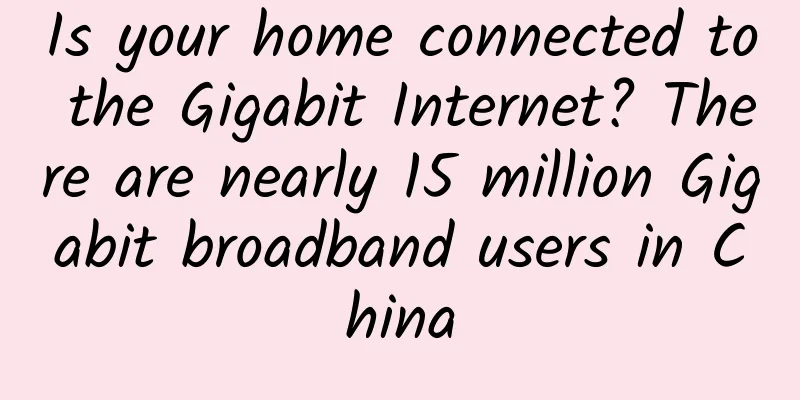Industry 4.0 is driving enterprise fiber access

|
Industry 4.0 has brought with it a wave of value-added applications that rely on high-speed connectivity. Inventory management, video surveillance and security, machine automation, and robotics are just a few of the areas that require high bandwidth and low latency. Gigabit and multi-gigabit broadband for businesses is becoming more common in the market, driving the demand for fiber-optic network connections. Within the enterprise – whether it is an office, factory, warehouse, or dispersed buildings on a campus like a university or airport – connectivity is also critical, and the benefits are indisputable: efficiency, productivity, cost, security are just a few of the business areas that are enhanced when connectivity is enhanced. To achieve this, optical LANs based on fiber are also increasingly being adopted by enterprises. Not only does fiber optics provide future-proof capacity, mission-critical security and reliability, it is also the most energy-efficient technology. Whether it is used for fiber LAN or broadband networks. However, the corporate sector is actually many sectors: an agricultural environment is very different from an office, which is very different from a hospital. An industrial site will have a mix of mobile machinery and fixed equipment such as cameras and printers. A variety of technologies are needed to meet the various needs: private LTE or 5G mobile, Wi-Fi or fiber fixed connections. But even with wireless technology, you still need fiber behind it to connect everything together and provide capacity for the multitude of devices and services. Traditionally, bringing Gigabit and multi-Gigabit broadband to the enterprise required dedicated point-to-point fiber connections. This is no longer the case, as 10G and now 25G PON technology allows broadband operators to deliver the quality of service that enterprises require over their existing fiber-to-the-home networks. This is much more efficient for operators. A single network can support residential, business and even mobile backhaul services, reducing costs and increasing ROI by 15-20%. New technologies, such as cloud-based network slicing, enable more efficient operations in converged networks. Enterprise traffic can be delivered via dedicated slices, with independent management and quality of service. Fiber access networks are on the rise. Analysys Mason predicts that fiber-connected businesses will grow by 30% in the next four years, bringing benefits to businesses and network providers. In the future, the ultra-large capacity of fiber can be easily enhanced on the same fiber infrastructure. Today 10 Gb/s and 25 Gb/s are a reality, and work on 50 Gb/s has already begun. In addition, fiber has a long physical shelf life without degradation and is the most environmentally friendly broadband technology. The evolution of fiber technology, new technologies and applications, and dedicated solutions help enterprises and operators achieve their goals more easily and efficiently. |
>>: What is Wi-Fi-6E and how is it different from Wi-Fi-6
Recommend
Cool Knowledge: Learn about RF Antennas in One Article
RF Antenna picture An antenna is a device used to...
The Secret History of IPv6
As we all know, IPv6 is a new technology that is ...
CDN has so many derivatives?! Yunfan Accelerator takes advantage of technological innovation to conquer the new blue ocean of short videos
[51CTO.com original article] 2017 has quietly pas...
Virtono opens new San Jose data center: KVM annual payment starts at 11.21 euros, 40% off for monthly payment
I received an email from Virtono, in which the me...
ZJI launches Hong Kong Huawei Cloud CN2 server: 450 yuan/month E5-2630L, 16G memory, 480G SSD, 5M CN2 line
ZJI has launched a new machine again, this time i...
China Broadband Truth Investigation (Part 2): Why Internet speed is always different from what is advertised?
No matter which operator you apply for broadband ...
ElasticSearch IK Tokenizer Quick Start
1. Install IK word segmenter 1. Allocate a pseudo...
Talk: It's time to talk about what IPv4 and IPv6 are
On November 25, 2019, the RIPE NCC, which is resp...
Single-pair Ethernet standard means goodbye to batteries
If you’ve ever spent a Christmas morning with chi...
ZJI: 580 yuan/month 2×E5-2630L, 32G memory, 480G SSD, 10M bandwidth, Hong Kong Confederation data center
ZJI is a well-known hosting company in the WordPr...
TCP three-way handshake and four-way wave and 11 states
[[331585]] Source: 22j.co/buCw Three-way handshak...
Operators dig into the Internet of Things: IoT strategic transformation in four steps
Driven by both technology and the market, the IoT...
RackNerd: Memorial Day Special Package $22.89/year - Dual Core/2G Memory/30G SSD/4TB Monthly Data Transfer
RackNerd has launched a special package for Memor...
Is there still a market for pure 4G mobile phones?
According to a report by China Business News, Hua...
The Brazilian government announced plans to achieve full 5G coverage across the country by 2029
On the 17th local time, the Brazilian government&...









